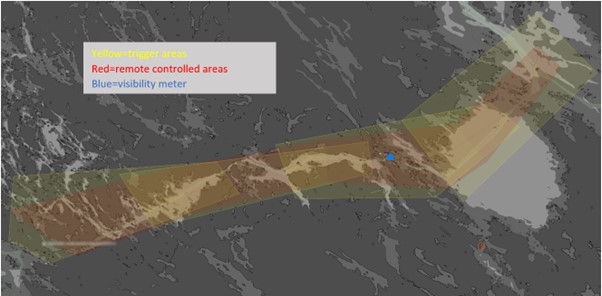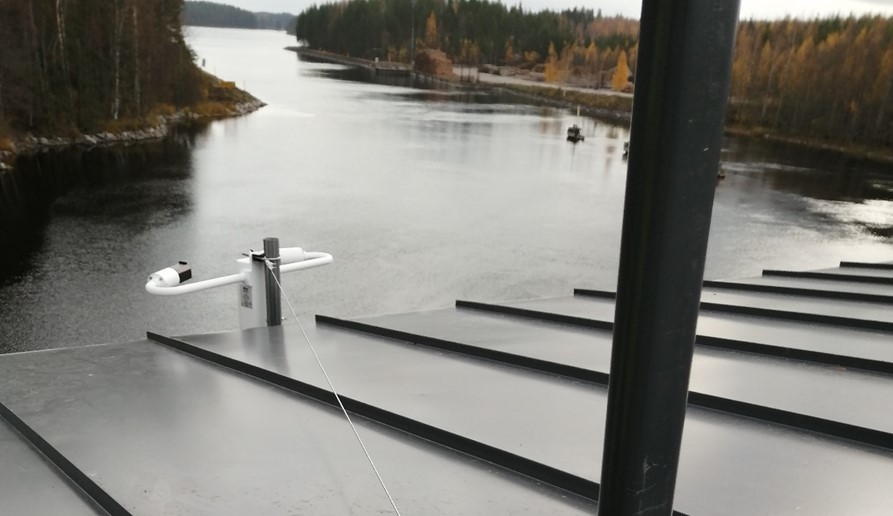Finland
Remote controlling AtoN lights
The Finnish Transport Infrastructure Agency (FTIA) manages approximately 25,500 visual aids to navigation (AtoNs) spread along around 16,200 kilometres of waterways that are under its authority and located in Finnish sea and lake areas. There are approximately 7,700 fixed and 17,800 floating AtoNs. Approximately 4,300 of the AtoNs are lighted. Waterway maintenance includes the maintenance of AtoNs, which focuses on periodic checks, maintenance visits and repairing defects. Winter conditions are demanding for AtoNs. The floating AtoNs have often either shifted location, been damaged, or disappeared entirely after the ice has cleared. Light defects are also common.
The use of the FTIA’s current AtoN remote monitoring system began in 2008. Long before this, various small-scale remote monitoring experiments with fixed AtoNs had been undertaken. The remote monitoring provides information on the status and failures of the AtoNs’ lantern and energy system, as well as the location of floating AtoNs. Nowadays, there are already more than 2,000 remotely monitored AtoNs. Sabik Marine’s* remotely monitored lanterns are used in fixed AtoNs and on buoys. The remote monitoring software service comes from Arctia Ltd. The most important status and fault information is forwarded from the monitoring software over a documented software interface to the FTIA’s information systems for further use and analysis.
A remotely monitored AtoN can also be remotely controlled. This refers to controlling an AtoN’s light state and luminous intensity remotely either manually or automatically. FTIA started to use remote control more widely in 2014 and the functionality is currently in use on six different routes with a total of 160 AtoNs.
In its normal operating mode, the AtoN light has luminous intensity which achieves the nominal range and switching between day- and night-modes is controlled by the photocell. The nominal range of the AtoN light signal is declared in the List of Lights for 10 M meteorological visibility. With remote control, it is possible to switch lights on during the daytime or increase luminous intensity, when the visibility conditions are poor, for example due to fog, rain or snow.
Manual AtoN remote control is achived by VTS operators using dedicated software at the request of the pilot or the vessel participating in the vessel traffic service. The remotely controlled route can contain one or more AtoNs. Typically, all the AtoNs in the single fairway are controlled at the same time. AtoN Control commands are sent via the mobile network. The AtoN is set to a certain intensity for a certain duration of time. After this the AtoN automatically returns to the normal operating mode. This functionality has been used actively. The response from users has been very positive and more remote-controlled fairways have been requested.
Automated AtoN remote control is currently under test. Control commands are formed based on the AIS Class A ship traffic observed on the route and the meteorological visibility. The test area is approx. 54 km long, part of the 4.2m deep Haukivesi-Joensuu fairway in the Finnish lake area. The test area is divided into four independently controlled sections, each of which has its own trigger areas. The test area has 39 remotely controlled AtoNs. Because the visibility conditions can be very local, an additional visibility sensor supplied by Luode Consulting Ltd. was installed along the route (See illustration).
When the vessel arrives at the trigger area and the visibility is lower than the nominal (10 M), the remote control is automatically activated and the light intensity of the AtoNs in the fairway section is increased for a predetermined duration of time, which is based on the vessel’s estimated transit time on the fairway section. After this, the AtoNs return to their normal operating state, if no more traffic is detected.
The automatic AtoN remote control is used only at night. There are currently four luminous intensity levels in use, and the most suitable for the current visibility conditions is selected at any given time. The goal is that the range of the lights would remain roughly constant as visibility varies.
For safety reasons, the automatic AtoN remote control test system follows some basic rules:
- The automatic AtoN remote control is only used to increase the light output from the nominal.
- The manual AtoN remote control from the VTS centre is always available and overrides the automatic AtoN remote control.
- Accurate log information is saved for all commands so that the activity can be traced later.
*IALA Industrial Member.
Picture captionVisibility sensor on the Vihtakanta bridge


Author: Sami Lasma
Rapporteur: Paul Ridgway

